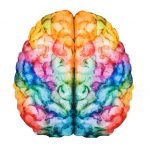Novel Treatment for Cocaine Addiction
Node Smith, ND
A very interesting study on an off-label use of a common diabetes medication for the treatment of cocaine addiction was recently published in the journal Neuropsychopharmacology.1 The research is specifically addressing the tendency for cocaine addicts to relapse on the drug. Relapse rates are roughly 50 percent, and pose the major obstacle in treating cocaine addiction – and most other addictions as well. It is estimated that just under a million people are addicted to cocaine annually.
Studying how long-term use of narcotics, and nicotine affect the brain, and how neurological changes affect relapse tendency
Heath Schmidt, a behavioral pharmacologist and neuroscientist at the University of Pennsylvania has been studying how long-term use of narcotics, and nicotine affect the brain, and how neurological changes affect relapse tendency. Schmidt describes his research in a recent interview, as well as provides a concise depiction of the difference between basic and clinical research:
“As a basic scientist I’m interested in how the brain functions during periods of abstinence from cocaine and other drugs and how neuro-adaptations in the brain promote relapse back to chronic drug taking,” he explains. “From the clinicians’ perspective, they’re looking for medications to try to prevent relapse. Our goal as basic scientists is to use animal models of relapse to identify novel medications to treat cocaine addiction.”
How does food-seeking behavior overlap with drug-taking phenomena in the brain?
Schmidt and other colleagues began wondering how food-seeking behavior might overlap with drug-taking phenomena in the brain. They found that there are neural mechanisms and circuitry that significantly overlap. One structural component found to be shared in both food-seeking and drug-taking is the activation of the glucagon-like peptide 1 (GLP-1) receptor. GLP-1 is a hormone that helps regulate food intake and blood glucose levels. The GLP-1 receptor is a well-known receptor in the small intestine, but this same receptor was also found in the brain, in a region called the nucleus tractus solitarius.
It was hypothesized that perhaps it could decrease drug seeking behavior. This is exciting because there are already FDA-approved medications that already target GLP-1 receptors; they are diabetic and obesity medications.
Research revealed decreased levels of GLP-1 hormone
The research experiment began after blood was analyzed 21 days post cocaine administration and revealed decreased levels of GLP-1 hormone. When this was noted, the researchers wondered if this hormone might actually help modulate cocaine induced behaviors, like seeking out the drug.
To test this, rats were allowed to self-administer cocaine for a 3-week period of time. On average, they self-administered 28 infusions of cocaine daily. Then saline was exchanged for the cocaine solution, which lead to withdrawal. When lever pressing rates significantly dropped it was interpreted as distinguishable of drug-seeking behavior. When the rats were re-exposed to the drug itself, or to cues paired with the drug, the drug seeking behavior was resumed (the rates of lever pushing increased, similar to a relapse in a human).
Animals were then pretreated with a GLP-1 agonist (Exendin-4) to determine if the drug might blunt cocaine-seeking
The animals were then pretreated with a GLP-1 agonist (Exendin-4) to determine if the drug might blunt cocaine-seeking in some way. Results did indicate a reduction in drug-craving and seeking, even after a direct injection of cocaine and exposure to environmental cues during withdrawal.
Preliminary research into the use of this drug class for cocaine addiction and relapse prevention
The researchers also assessed whether this effect was due to a dose that might have been causing the animals to become sick, since GLP-1 agonists are known to cause nausea at high rates in diabetics taking the drug. It seemed that the drug was not making the animals sick, and the reduction of drug-seeking behavior may be due to agonism of the GLP-1 receptor.
This is preliminary research into the use of this drug class for cocaine addiction and relapse prevention, however, human trials are already scheduled.
Source:
1. Hernandez NS, Ige KY, Mietlicki-baase EG, et al. Glucagon-like peptide-1 receptor activation in the ventral tegmental area attenuates cocaine seeking in rats. Neuropsychopharmacology. 2018
Image Copyright: <a href=’https://www.123rf.com/profile_Elnur’>Elnur / 123RF Stock Photo</a>
 Node Smith, ND, is a naturopathic physician in Portland, OR and associate editor for NDNR. He has been instrumental in maintaining a firm connection to the philosophy and heritage of naturopathic medicine among the next generation of docs. He helped found the first multi-generational experiential retreat, which brings elders, alumni, and students together for a weekend camp-out where naturopathic medicine and medical philosophy are experienced in nature. Four years ago he helped found the non-profit, Association for Naturopathic ReVitalization (ANR), for which he serves as the board chairman. ANR has a mission to inspire health practitioners to embody the naturopathic principles through experiential education. Node also has a firm belief that the next era of naturopathic medicine will see a resurgence of in-patient facilities which use fasting, earthing, hydrotherapy and homeopathy to bring people back from chronic diseases of modern living; he is involved in numerous conversations and projects to bring about this vision.
Node Smith, ND, is a naturopathic physician in Portland, OR and associate editor for NDNR. He has been instrumental in maintaining a firm connection to the philosophy and heritage of naturopathic medicine among the next generation of docs. He helped found the first multi-generational experiential retreat, which brings elders, alumni, and students together for a weekend camp-out where naturopathic medicine and medical philosophy are experienced in nature. Four years ago he helped found the non-profit, Association for Naturopathic ReVitalization (ANR), for which he serves as the board chairman. ANR has a mission to inspire health practitioners to embody the naturopathic principles through experiential education. Node also has a firm belief that the next era of naturopathic medicine will see a resurgence of in-patient facilities which use fasting, earthing, hydrotherapy and homeopathy to bring people back from chronic diseases of modern living; he is involved in numerous conversations and projects to bring about this vision.










